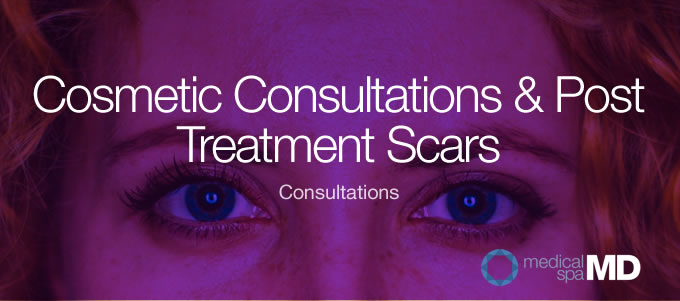Cosmetic Consultations: Patient and Physician Perspectives on Scar Appearance
/There are always differences in how providers and patients see both outcomes and - when there's surgery involved - normal byproducts of the treatment like scaring. Yep, patients see scarring different than you do as a surgeon.
You're already explaining scaring and expected results, but patients commonly discount what they see as secondary effects to the primary benefits. So while the new results are something that patients quickly adapt to as the 'new normal', but the scars - even if they're minimal - stay. If they're visible they can detract from the primary benefits over time.
A new article raises patient and physician perception of how patients and physicians disagree over the appearance of scars and it could cause some differences. What causes the disagreement over the evaluation of scars? The researchers looked for studies where the Patient and Observer Scar Assessment Scale (POSAS) was present, and from there, researchers found most studies had expressed indifference towards the scars. Based on their findings, the common reason for disagreement towards a scar when patients have a favorable rating towards a scar, while physicians did not detect a difference on the scar.
Findings:
- Only 28% of the studies had disagreements toward scar appearance
- Sixty seven percent of the patients preferred a “given surgical closure method” (Zhang et al., 2018 p. E8) than what was performed.
Additionally, there is a psychosocial effect in the appearance of scars and in the quality of life of patient afflicted with surgical scars, as Zhang et al. also briefly discussed. Many patients are unhappy with the scar that results from their surgery. Dissatisfaction and depression had been reported on patients who had facial trauma (Negenborn, 2017). It is also alarming to learn how those with facial scarring would prefer to die than live with the scar on their face (Zhang et al., 2018).
The researchers recommend that a pre-operative discussion is necessary to set expectations, and that an improved assessment scale would help in identifying and rating scars better.
Several studies have investigated in the prevention of emerging scars and eventually treating them as well.
According to Monstrey et al., (2014), silicone sheets or gels are the most effective non-invasive remedy to treat scars post-surgery. Additionally, some physicians would recommend massaging the scar to treat it. Other known treatment options for scar treatments are fat grafting-- which proved effective for several patients (Negenborn et al., 2017; Riyal et al., 2017), laser treatments (Alberti et al., 2017; Perez and Rohrich, 2017), and even botulinum toxin (Ziade et al., 2014).
So what to do?
Make sure that you're up front about expectations post treatment, but also walk through a treatment plan to address or treat side effects like scarring long term. (Especially if the patient is prone to keloid scarring) Patients can be expected to follow very specific pathways on how they view their results and you can go a long way in elevating their perceived outcomes if you spend just a little time up front.






